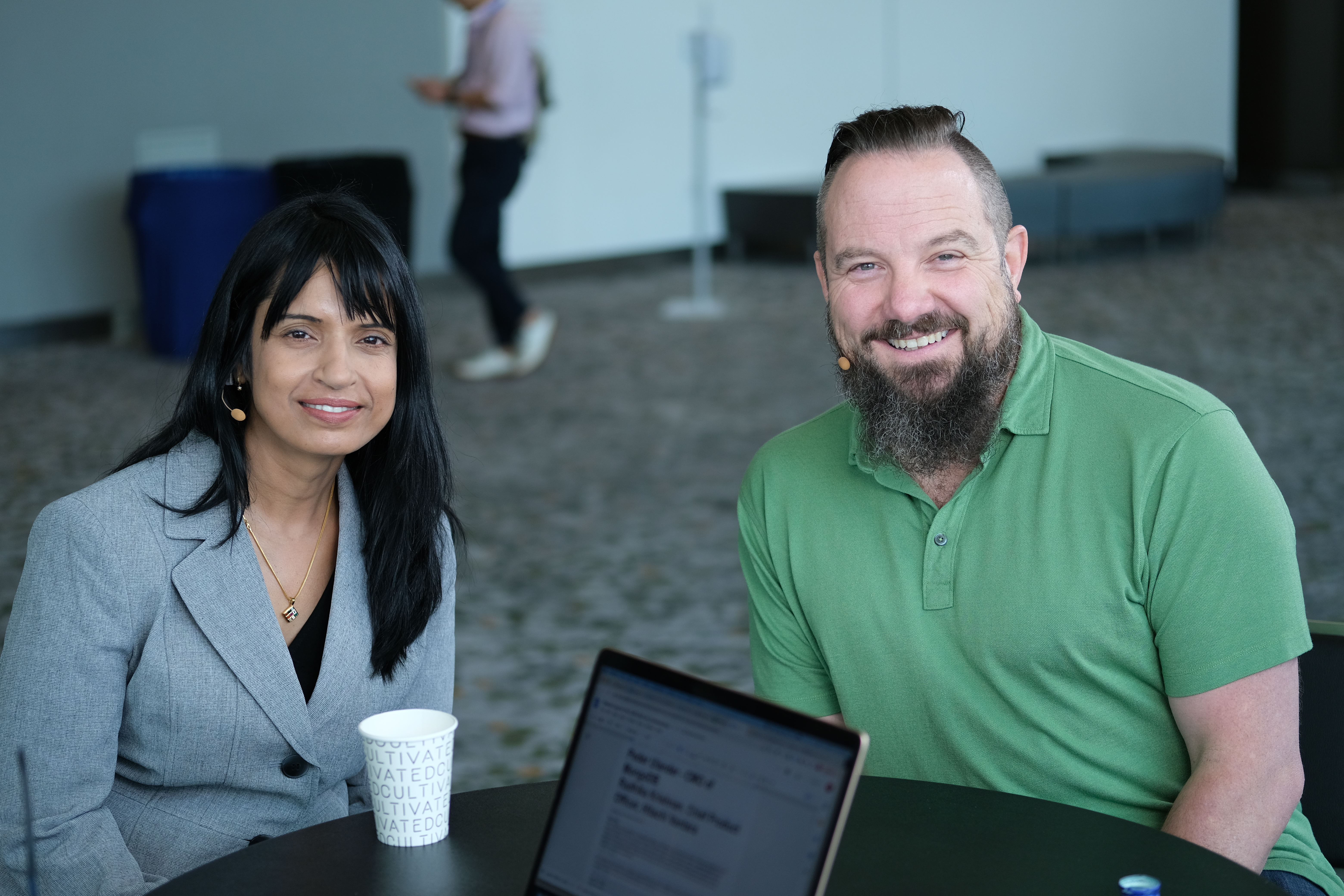 BIG DATA
BIG DATA
 BIG DATA
BIG DATA
 BIG DATA
BIG DATA
It’s ironic that despite data being the backbone of all digital transformations, it has not yet been fully modernized because it still resides in monolithic databases. With the market changing fast, revamping the data architecture has become necessary.
The partnership between Hitachi Vantara LLC and MongoDB Inc. renders data fabric capabilities that deliver meaningful insights to the end customer, according to Radhika Krishnan (pictured, left), chief product officer of Hitachi.
“We actually have a utility company in North Carolina whose customers are actually able to save on their electricity and water bills,” Krishnan stated. “This particular company had to contend with millions of sensors that were constantly streaming data back. That’s where a partnership with MongoDB really paid off … we were able to leverage Pentaho to integrate all of the data and have the data reside on MongoDB.”
Krishnan and Peder Ulander (pictured, right), chief marketing officer of MongoDB, spoke with theCUBE industry analyst Dave Vellante at MongoDB World, during an exclusive broadcast on theCUBE, SiliconANGLE Media’s livestreaming studio. They discussed how Hitachi partnered with MongoDB to modernize the data architecture for a frictionless experience and enhanced insights for the end user. (* Disclosure below.)
Through the data fabric construct, a fearless framework is created that enables the convergence of data, irrespective of location, in a frictionless way, according to Krishnan.
“Data exists to deliver insights; therefore, you dramatically want to minimize the friction in the process, and that is exactly what we’re attempting to do with our data fabric construct,” she explained. “We’re essentially saying customers don’t have to worry about federated data structures, the architecture of data, and lakes fitting in multiple locations. What we’re providing is a mechanism whereby they can be confident about the quality of the data at the end of the day.”
By offering a frictionless experience end to end, Krishnan believes the time taken to deliver insights is drastically reduced.
“We had this very large bank, one of the top 10 banks here in the U.S., that essentially had multiple data catalogs that they were using to essentially sort through their metadata and make sense of all of this data that was coming into their systems,” she said. “We were able to dramatically cut down on the amount of time that it takes to deliver insights to them … the metric shared was 600% improvement.”
Through the use use Pentaho and Lumada platforms, Krishnan believes significant insights are derived from data.
“Pentaho gives us some of that front-end capability in terms of integration and so forth,” she stated. “The Lumada platform, the umbrella brand name, is really connoting everything that we do in the data space that allows customers to derive those meaningful insights. Lumada literally stands for illuminating data.”
Since the world is moving from data centers to the edge, Ulander believes the Hitachi-MongoDB partnership helps overhaul the data architecture.
“We’ve seen apps go from monoliths to microservices, compute from physical to serverless, network from copper wireline to 5G networks, but the one layer that hasn’t completely transformed is data,” Ulander pointed out. “You’ve got to rethink your data architecture … MongoDB, together with our partners, especially Hitachi, are best suited to really kind of help with this transition for our customers as they move from data centers to centers of data.”
Integrating data workloads into a single framework has become a requirement for real-time influencing at the edge. Therefore, MongoDB serves as an all-in-one developer data platform, according to Ulander.
“Historically, there have been three silos of data: a system of record, a system of engagement, and a system of intelligence, which have operated independently,” he stated. “That’s the vision we have behind our developer data platform … it enables us to handle those transactional, operational and analytical workloads in real time. One of the things that we’ve announced here this week was our columnar indexing, which enables in-app analytics for those things that are not going back into the data warehouse or cloud.”
Here’s the complete video interview, part of SiliconANGLE’s and theCUBE’s coverage of the MongoDB World event:
(* Disclosure: TheCUBE is a paid media partner for the MongoDB World NYC event. Neither MongoDB Inc., the sponsor for theCUBE’s event coverage, nor other sponsors have editorial control over content on theCUBE or SiliconANGLE.)
THANK YOU